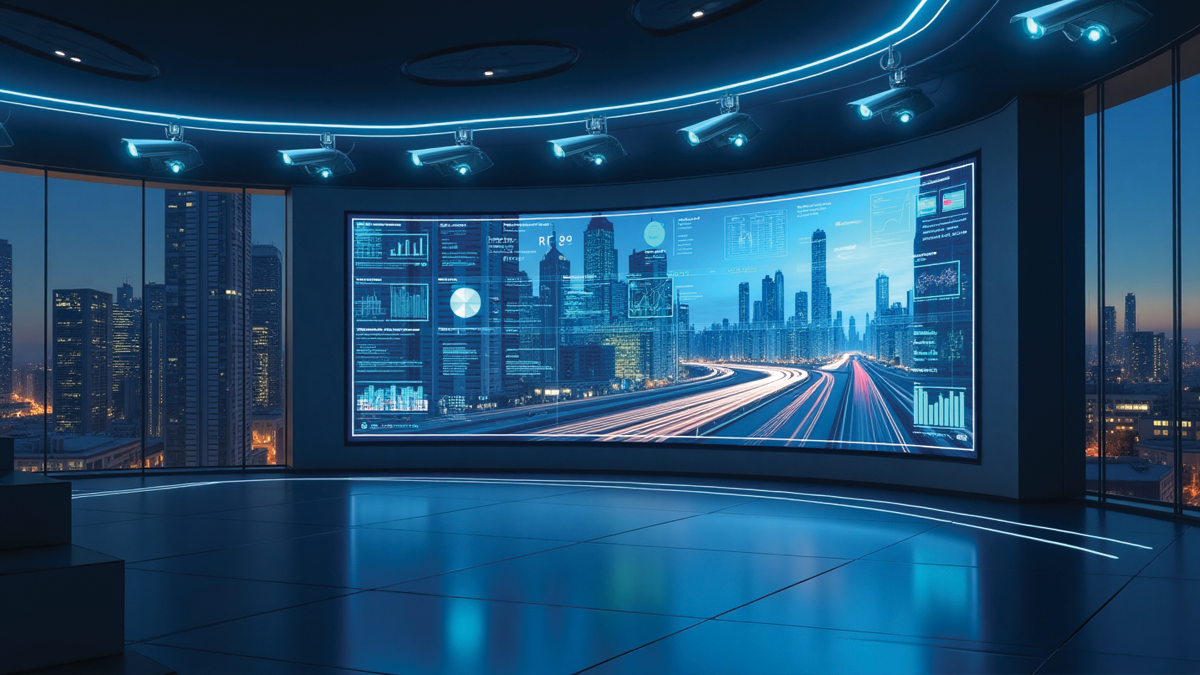The rise of AI Surveillance is a topic generating significant debate due to its impact on privacy and security.
Introduction
AI surveillance has improved a lot since it started. It has changed from simple analog systems to advanced AI-powered solutions. The technology for video surveillance has changed a lot. This change comes from the growing need for security and safety in many areas. This article looks at how video surveillance has changed over time. It also discusses its current state and future with artificial intelligence.
The Early Days: Analog Surveillance
Video surveillance began in the mid-20th century with basic analog systems. The invention of the closed-circuit television (CCTV) in the 1940s paved the way for its widespread adoption. At first, these systems were used for security in banks and government buildings. They used film cameras to send images to monitors, which were mainly for live viewing. Recording was difficult because it used VHS tapes. These tapes could only hold a small amount of footage. This made it hard to find and analyze the recorded data.
Limitations of Analog Systems
The limitations of analog systems were evident. The quality of footage was often low, rendering identification difficult. Additionally, the systems were vulnerable to tampering, and video feeds could be susceptible to interception. The lack of remote access capabilities hindered real-time monitoring, leaving security personnel reliant on physical presence at monitoring stations.
The Digital Revolution: Transition to IP Cameras
The advent of digital technology marked a significant turning point in the late 1990s. The introduction of Internet Protocol (IP) cameras revolutionized video surveillance. Unlike their analog predecessors, IP cameras convert video footage into digital data, allowing for higher-resolution images and better clarity.
Advantages of Digital Surveillance
Digital systems offer several advantages:
-
- Remote Access: Users can access feeds from anywhere using computers or smartphones.
-
- Better Storage: Digital video recorders (DVRs) replaced VHS tapes. They allow for more data storage and easier access.
-
- Integration: IP cameras could be easily integrated with other technologies, such as alarms and sensors, creating a cohesive security ecosystem.
This flexibility let businesses customize their security solutions to meet their needs. This made video surveillance more efficient and effective.
The Era of Analytics: AI Surveillance Systems
As technology advanced, smart surveillance systems began to emerge in the 2000s. These systems utilized sophisticated algorithms and analytics to significantly enhance security capabilities. Features like motion detection, facial recognition, and license plate recognition became standard.
Benefits of AI Surveillance
Intelligent surveillance systems provide crucial benefits:
-
- Proactive Security: Automated alerts for unusual activity offered a proactive approach to security management.
-
- Video Analytics: Businesses could analyze foot traffic and patterns to optimize operations.
-
- Cost Efficiency: Reduced manpower needs allow organizations to allocate resources more effectively.
Entering the Age of AI: The Future of Video Surveillance
Today, artificial intelligence (AI) is being used in video surveillance. This change makes it a more powerful tool for security and improves efficiency. AI algorithms can quickly analyze large amounts of video data, spot unusual activities, track people using different cameras, and predict potential security problems by analyzing behavior patterns.
Key AI-Driven Features
-
- Facial Recognition: AI-powered facial recognition systems can identify known individuals, enhancing security measures in sensitive areas.
-
- Behavioral Analysis: AI can detect unusual behavior patterns, alerting security personnel to potential threats before they escalate.
-
- Object Detection: Advanced analytics can identify specific objects and activities, streamlining incident responses.
Privacy Considerations
However, the rise of AI in video surveillance has sparked debates about privacy and ethical considerations. The ability to monitor and analyze individuals raises questions about consent, data protection, and the potential for misuse. Striking a balance between security and privacy rights will be essential as this technology evolves.
Conclusion
The evolution of video surveillance from analog systems to advanced AI technologies illustrates the remarkable advancements in security measures over the decades. As we use AI, we must stay alert about ethics. Using these technologies to improve security while respecting individual rights is essential. The future of video surveillance offers better safety and security. It will also provide a more intelligent system that adapts to our needs. As technology changes, so will how we see and use video surveillance in our daily lives.


